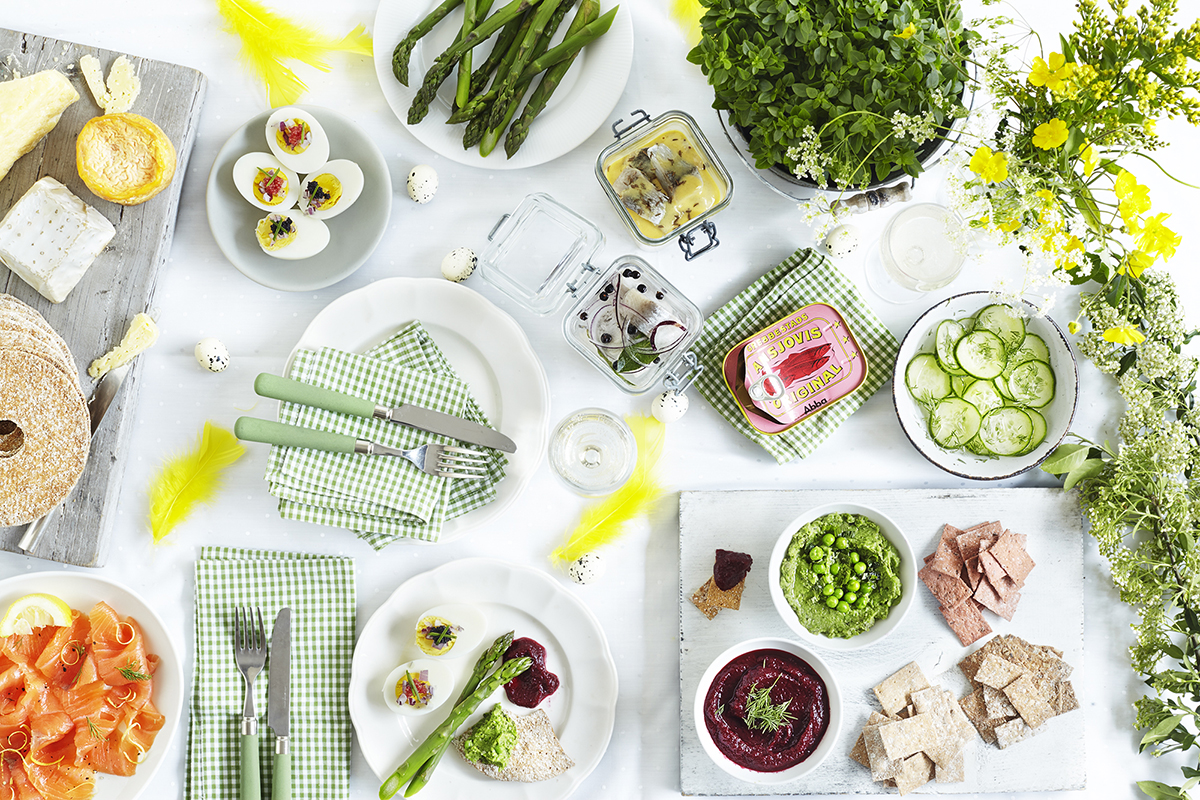Easter in Sweden can feel quite different to the holiday in the UK. The British Isles may well be enjoying the first signs of Spring – green buds, bursts of sunshine and milder weather. Meanwhile, in Sweden, temperatures are more likely to hover around 0 C and snow is not uncommon. Though originally a religious holiday, these days Swedish Easter traditions are more likely to be an excuse to get family together, spend some time outdoors and gather around the table.
The build up to Easter, or Påsk, begins with Shrove Tuesday, but instead of eating pancakes, Swedes consume the first of what will undoubtedly be several semlor. These sweet, cardamom-studded buns are served stuffed with marzipan and piped with cream. Originally, the buns were sweetened bread rolls dipped in warm milk eaten during a feast preceding a period of fasting. However, in their modern cream and marzipan incarnation, they are eaten throughout Lent. Many papers will feature bakeries serving the best buns and the completion to win the accolade ‘the year’s best semla’ is fierce.
Even if the temperature hasn’t risen much by the time Easter weekend rolls around, Swedes can at least hope for slightly longer days. Each increasing minute of daylight is measured with glee. The long weekend becomes the first excuse to get outdoors and begin preparing for the warmer summer months. Many will escape to the country, particularly if they have a summer house, cabin or cottage. It is a time to inspect the damage winter has done, sow seeds and rake up dead leaves before sitting down to a long Påsk lunch or dinner.
Swedish celebration food is based around a tradition of husmanskost (literally ‘house-owner’s fare’) – hearty dishes which were intended to fill you up for farm labour. As with Christmas and Midsummer’s Eve, fish, in particular herring, features heavily at Easter, accompanied by shots of snaps. Lunch will typically consist of boiled eggs served with pickled herring, cured salmon and Janssons Temptation – a gratin of potato, cream and marinated sprats (called anjovis – not to be confused with anchovies). Dinner will often consist of more seasonal foods like roast joints of lamb, asparagus, carrots and beans.
Swedish Easter decorations include brightly coloured feathers tied to birch tree branches. The tradition dates back to the late 19th century. It is thought to reference the playful practise of bashing friends and family with birch twigs as part of the carnival of fun and games before Lent. These days the colourful branches are more likely to be found in vases. They can be bought from the florist, or made at home with the packs of feathers for sale everywhere at this time of year.
Many Swedes have Easter-specific decor collected over the years and open in the weeks leading up to the holiday. The brightly coloured decorations featuring chickens and eggs and are often home-made. In particular, kids are encouraged to make their own and egg painting is considered a must activity. Families also buy cardboard or paper maché eggs featuring nostalgic designs to fill with pick-and-mix sweets. These are then hidden around the house for kids to find on Easter Sunday.
Easter decorations can also feature witches or old ladies due to a strange and uniquely Swedish Easter custom where children to dress up as witches known as påskärringar (‘Easter hags’) and go door-to-door, asking for treats. It may seem like Halloween has come too early, but in fact the tradition refers to an old belief that witches would fly to dance the Devil just before Easter at Blåkulla (‘Blue Hill’). Nowadays children don shawls and long skirts and tie scarves around their heads. They also paint their cheeks rosy red (usually mum’s lipstick) and dot freckles on their noses. This is all to represent the witches – an effect that is generally more cute than frightening.
Sourdough crackers and crispbreads
Our hand-baked sourdough crackers and crispbreads are the perfect accompaniment to artisan cheeses, cured meats and dips.
View Range
